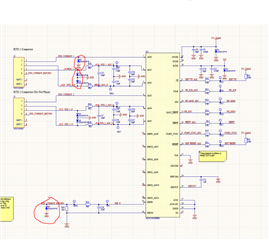Hello,
We intend to conduct EMC testing, which includes ESD on our temperature sensing device which consists of an RTD connected to an ADS124S08.
I was wondering if anyone knew the impact of connecting an ESD diode to ADC inputs and IDAC pins like below:
We were looking at using ESD diode: ESD351 1-Channel 30 kV ESD Protection Diode with Low Clamping Voltage in 0402 Package datasheet
Would connecting these diodes to the exposed pins affect our measurements at all? We are using a PT1000 RTD.
Any help is appreciated.
Kind regards


